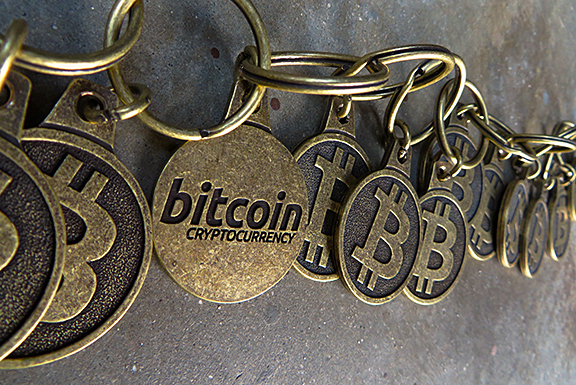A Blonde and Blockchain
Sooner or later, I had to dive in and try to understand what a blockchain is, what it’s good for, and what ways, if any, it might be useful to me, A Blonde.
One of its most commonly recognized iterations is, of course, cryptocurrency. But we’ll have to back up from there to try to find out what it’s all about.
In a way, a blockchain is the opposite of “fake news.” By that I mean the many, many ways there are today to make us “see” things with our own eyes that aren’t there. Images can be manipulated with such skill that it’s sometimes hard to be positive if it’s not original. Video, voices, social media posts, not to mention the content contained therein itself, can all be adjusted and fly around with such speed that you’ll swear you witnessed something yourself, only to discover that you (most likely) didn’t, and that it wasn’t “real.”
A blockchain is, ostensibly, the opposite. It’s a system the multiple redundancy of which makes it “unalterable,” thus “unhackable.”
Definitions:
A blockchain is essentially a digital ledger of transactions that is duplicated and distributed across the entire network of computer systems on the blockchain. Each block in the chain contains a number of transactions, and every time a new transaction occurs on the blockchain, a record of that transaction is added to every participant’s ledger. The decentralized database managed by multiple participants is known as Distributed Ledger Technology (DLT). (euromoney.com)
A blockchain is a specific type of database. It differs from a typical database in the way it stores information: blockchains store data in blocks that are then chained together. As new data comes in it is entered into a fresh block. Once the block is filled with data it is chained to the previous block, which makes the data chained together in chronological order. Different types of information can be stored on a blockchain but the most common use so far has been as a ledger for transactions. No single person or group has control – rather all users collectively retain control. Decentralized blockchains are immutable which means that the data entered is irreversible. (investopedia.com)
A blockchain is a distributed system that consists of a network of computers connected over the Internet which collectively performs the bookkeeping. In blockchain, one ledger is distributed and maintained across the network. Every computer in the network validates the transactions, but no one has control over the network, unlike multiple users working in a centralized server. (cloudcredential.org)
Blockchain technology came to our attention with the appearance of
“cryptocurrrency.” This is simply not-money. It is a value that can be transferred from one entity to the next in exchange for goods and services. When restaurants and other brick and mortar places began accepting bitcoins rather than cash or credit card, it seemed like the era of crypto was truly upon us. While that hasn’t necessarily fully materialized, it is still a common use of the blockchain.
 Other uses are being experimented with: loyalty rewards, supply chain management, digital ID, copyright and royalty protection, even the bane of everyone’s 2020 election: voter ID; property transfer, tax payments, medical records, weapons tracking, wills and inheritance, and – “bigly” – managing the IoT (Internet of Things). Regarding that last one, as an example, consider you’re renting a smart car to drive you around an unfamiliar city – you can validate the vehicle’s performance using blockchain information. You can call for one, pay for it, use it, and return it, probably without any other human interface, if it’s connected to the IoT using blockchain.
Other uses are being experimented with: loyalty rewards, supply chain management, digital ID, copyright and royalty protection, even the bane of everyone’s 2020 election: voter ID; property transfer, tax payments, medical records, weapons tracking, wills and inheritance, and – “bigly” – managing the IoT (Internet of Things). Regarding that last one, as an example, consider you’re renting a smart car to drive you around an unfamiliar city – you can validate the vehicle’s performance using blockchain information. You can call for one, pay for it, use it, and return it, probably without any other human interface, if it’s connected to the IoT using blockchain.
Given the noise surrounding the 2020 election and voter ID as well as the security of elections, it’s not a stretch to imagine that Boards of Elections will surely be looking into ways by which the technology can be used to validate election results, and ensure that living, registered, legal voters are those casting the votes and that the results are secure.
Part of the problem with blockchain, of course, is that it’s not a simple to understand concept, though it seems like it when you read the definitions.
But given that today, one of the greatest risks we all face is data breaches, whether it’s someone activating your computer’s camera while you work, hacking into a credit card’s transactions at a store, identity theft or home title fraud, simply understanding that it is a means by which these risks can be minimized or even eliminated, should make us take an interest.
Blockchain, as noted above, is simply data – yours and others – stored and managed in such a way that, until and unless someone finds a way around it, it will be as safe as possible from unwarranted access or alteration.
And now, with my brain properly worked out, Blonde out.










